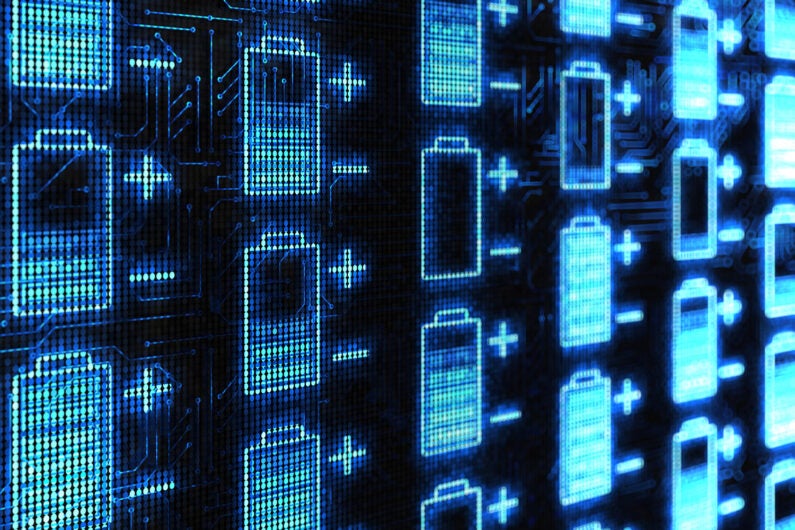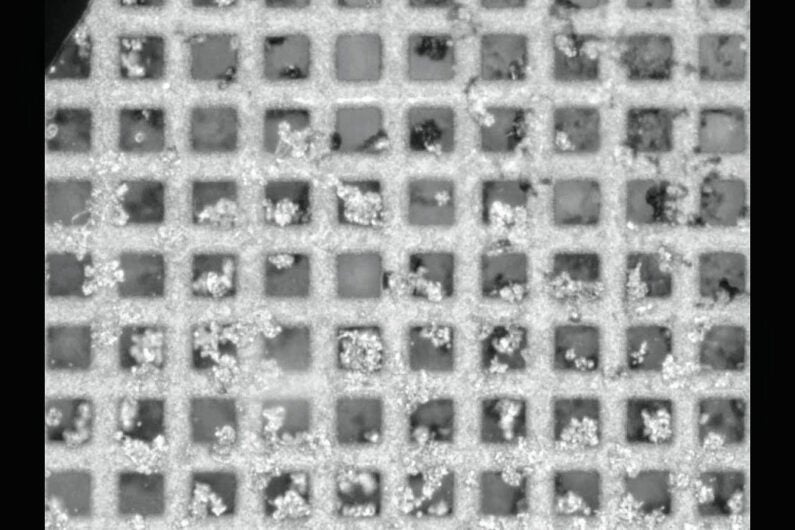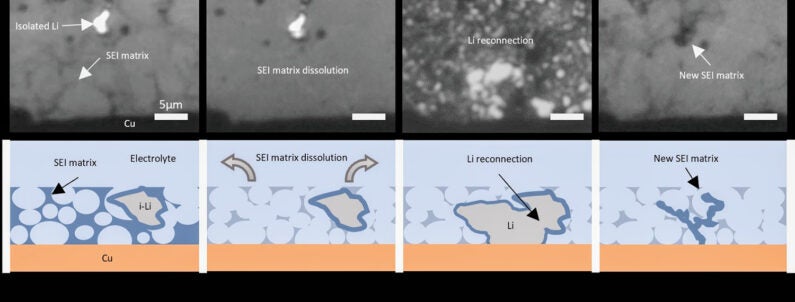Sitting idle boosts the performance of lithium metal batteries for next-generation EVs
Lithium metal batteries could double the range of electric vehicles, but current batteries degrade quickly during operation. Stanford researchers have discovered that you can improve the battery’s cycle life simply by letting it rest for several hours in the discharged state.

A new study presents possible solutions to a problem known to cause degradation and failure in lithium-metal batteries. (Image credit: alengo/iStock)
Next-generation electric vehicles could run on lithium metal batteries that go 500 to 700 miles on a single charge, twice the range of conventional lithium-ion batteries in EVs today.
But lithium metal technology has serious drawbacks: The battery rapidly loses its capacity to store energy after relatively few cycles of charging and discharging – highly impractical for drivers who expect rechargeable electric cars to operate for years.
Scientists have been testing a variety of new materials and techniques to improve the battery’s cycle life. Now, Stanford University researchers have discovered a low-cost solution: simply drain the battery and let it rest for several hours. This straightforward approach, described in a study published Feb. 7 in the journal Nature, restored battery capacity and boosted overall performance.
“We were looking for the easiest, cheapest, and fastest way to improve lithium metal cycling life,” said study co-lead author Wenbo Zhang, a Stanford PhD student in materials science and engineering. “We discovered that by resting the battery in the discharged state, lost capacity can be recovered and cycle life increased. These improvements can be realized just by reprogramming the battery management software, with no additional cost or changes needed for equipment, materials, or production flow.”
The results of the study could provide EV manufacturers practical insights on adapting lithium metal technology to real-world driving conditions, said senior author Yi Cui, the Fortinet Founders Professor of Materials Science and Engineering in the School of Engineering, and professor of energy science and engineering in the Stanford Doerr School of Sustainability.
“Lithium metal batteries have been the subject of a lot of research,” said Cui. “Our findings can help guide future studies that will aid in the advancement of lithium metal batteries towards widespread commercial adaptation.”

Magnified image of a copper mesh from a lithium metal battery in the discharged state. Tiny pieces of dead lithium of various sizes and shapes are deposited on square openings in the mesh. (Image credit: Wenbo Zhang/Stanford University)
Lithium metal vs. lithium-ion technology
A conventional lithium-ion battery consists of two electrodes – a graphite anode and a lithium metal oxide cathode – separated by a liquid or solid electrolyte that shuttles lithium ions back and forth.
In a lithium metal battery, the graphite anode is replaced with electroplated lithium metal, which enables it to store twice the energy of a lithium-ion battery in the same amount of space. The lithium metal anode also weighs less than the graphite anode, which is important for EVs. Lithium metal batteries can hold at least a third more energy per pound as lithium-ion.
“A car equipped with a lithium metal battery would have twice the range of a lithium-ion vehicle of equal size – 600 miles per charge versus 300 miles, for example,” said co-lead author Philaphon Sayavong, a PhD student in chemistry. “In EVs, the goal is to keep the battery as lightweight as possible while extending the vehicle range.”
Doubling the range could eliminate range anxiety for drivers who are reluctant to purchase EVs. Unfortunately, continuous charging and discharging causes lithium metal batteries to degrade quickly, rendering them useless for routine driving. When the battery is discharged, micron-sized bits of lithium metal become isolated and get trapped in the solid electrolyte interphase (SEI), a spongy matrix that forms where the anode and electrolyte meet.
“The SEI matrix is essentially decomposed electrolyte,” Zhang explained. “It surrounds isolated pieces of lithium metal stripped from the anode and prevents them from participating in any electrochemical reactions. For that reason, we consider isolated lithium dead.”
Repeated charging and discharging results in the build-up of additional dead lithium, causing the battery to rapidly lose capacity. “An EV with a state-of-the-art lithium metal battery would lose range at a much faster rate than an EV powered by a lithium-ion battery,” Zhang said.

A micron-size piece of isolated lithium is trapped in the solid electrolyte interphase (SEI) matrix when a lithium metal battery discharges. Center images: The matrix dissolves when the battery is at rest, enabling the isolated lithium to reconnect with the anode during charging. Far right: New SEI matrix forms during the next discharge cycle. (Image credit: Wenbo Zhang/Stanford University)
Discharge and rest
In previous work, Sayavong and his colleagues discovered that the SEI matrix begins to dissolve when the battery is idle. Based on that finding, the Stanford team decided to see what would happen if the battery was allowed to rest while discharged.
“The first step was to completely discharge the battery so there is zero current running through it,” Zhang said. “Discharging strips all the metallic lithium from the anode, so all you’re left with are inactive pieces of isolated lithium surrounded by the SEI matrix.”
The next step was to let the battery sit idle.
“We found that if the battery rests in the discharged state for just one hour, some of the SEI matrix surrounding the dead lithium dissolves away,” Sayavong said. “So when you recharge the battery, the dead lithium will reconnect with the anode, because there’s less solid mass getting in the way.”
Reconnecting with the anode brings dead lithium back to life, enabling the battery to generate more energy and extend its cycle life.
“Previously, we thought that this energy loss was irreversible,” Cui said. “But our study showed that we can recover lost capacity simply by resting the discharged battery.”
Using time-lapse video microscopy, the researchers visually confirmed the disintegration of residual SEI and subsequent recovery of dead lithium during the resting phase.
Practical applications
The average American driver spends about an hour behind the wheel each day, so the idea of resting your car battery for several hours is feasible.
A typical EV may have 4,000 batteries arranged in modules controlled by a battery management system, an electronic brain that monitors and controls battery performance. In a lithium metal battery, the existing management system can be programmed to discharge an individual module completely so that it has zero capacity left.
This approach does not require expensive, new manufacturing techniques or materials, Zhang added.
“You can implement our protocol as fast as it takes you to write the battery management system code,” he said. “We believe that in certain types of lithium metal batteries, discharged-state resting alone can increase EV cycle life significantly.”
Yi Cui is also a professor of photon science at SLAC National Accelerator Laboratory, director of the Sustainability Accelerator in the Stanford Doerr School of Sustainability, and co-director of the StorageX Initiative in the Stanford Precourt Institute for Energy. Other Stanford co-authors are Professor Stacey F. Bent and graduate students Xin Xiao, Solomon T. Oyakhire, Sanzeeda Baig Shuchi, Rafael A. Vilá, David T. Boyle, Sang Cheol Kim, Mun Sek Kim, Sarah E. Holmes, Yusheng Ye, and Donglin Li.
Funding was provided by the U.S. Department of Energy Battery Materials Research Program and Battery500 Consortium; the National Academy of Sciences Ford Foundation Fellowships; the National Science Foundation Graduate Research Fellowship Program; and the Enhancing Diversity in Graduate Education (EDGE) and Knight-Hennessy Scholars programs at Stanford.
